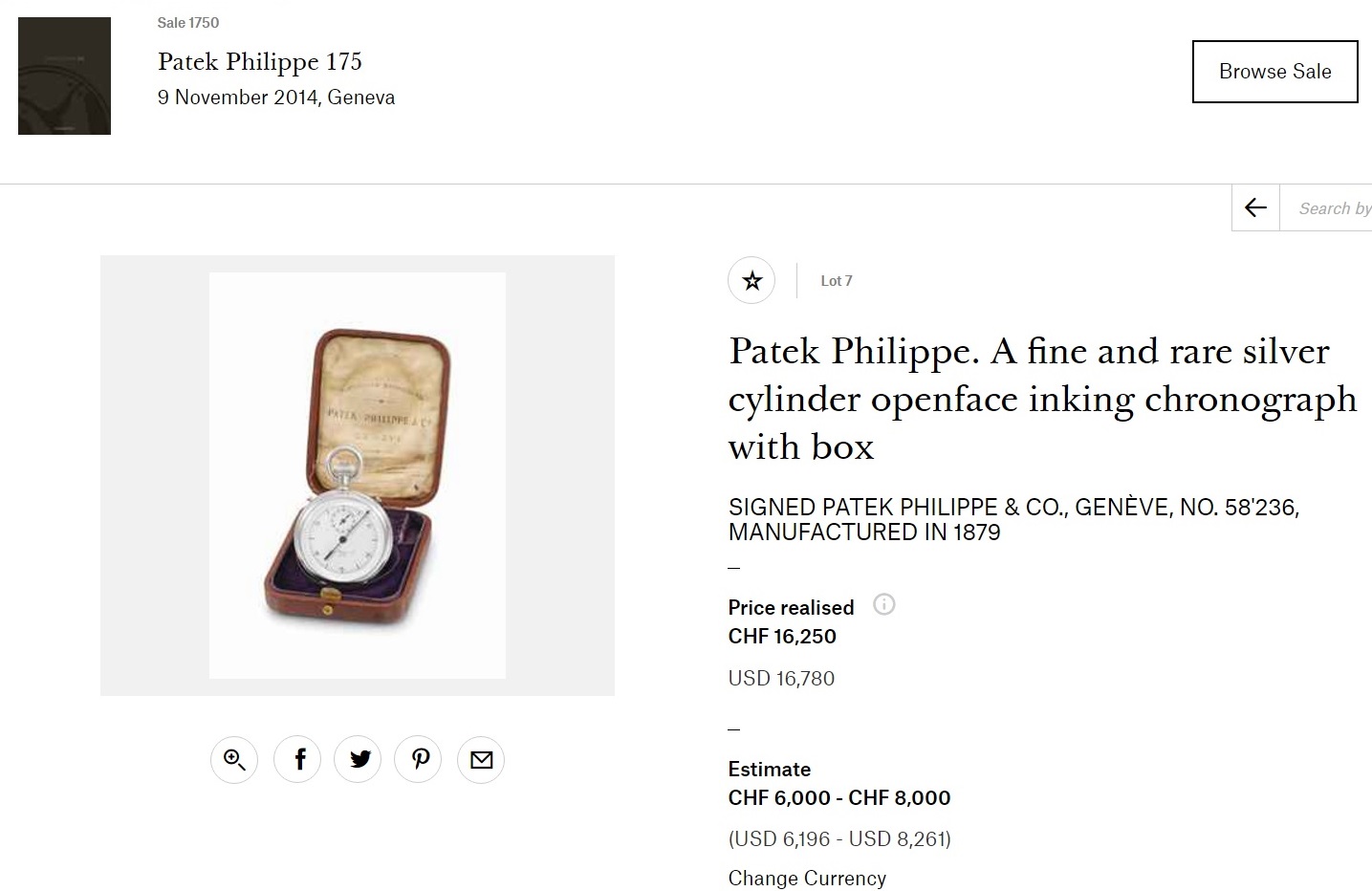PATEK PHILIPPE – A FINE AND VERY RARE SILVER CYLINDER OPENFACE STOP WATCH CHRONOGRAPH WITH INK HANDS. EXTRACT FROM THE ARCHIVES INCLUDED
SIGNED PATEK PHILIPPE & CO., GENEVE, NO. 61241, MANUFACTURED IN 1881
Cal. 20″‚ three quarter plate gilt finished keyless cylinder movement, 8 jewels, plain three arm brass balance, white enamel dial calibrated for 60 seconds, Arabic numerals, large central hand with ink bowl and discharging pointer, subsidiary dial for 60 minutes register, circular case, snap on back, the ink discharged by depressing the right button in the band, chronograph activated/stopped by depressing the left button in the band, case numbered, dial signed. Very small sign on the glass.
Diameter: 57 mm.
With Patek Philippe Extract from the Archives confirming production of the present chronograph in 1881 and its subsequent sale on August 2nd 1890.
Fresh to the market, this inking chronograph is distinguished by its very good, original overall condition.
Patek Philippe made approximately 98 of such inking chronographs in two series, the first from 1878 to 1881 and the second from 1891 to 1892 (see Patek Philippe Museum – Patek Philippe Watches Volume I , p. 290, Inking Chronograph).
To the best of our knowledge, this inking chronograph is part of a small series of only seven of this rare instrument to have appeared in public to date.
Nicolas Mathieu Rieussec, watchmaker to King Louis Philippe of France, was born in Toulouse in 1781 and invented the inking chronograph in 1821. The inking chronograph was then improved and perfected by Frederick Louis Fatton, one of Breguet’s most gifted workmen.
The inking chronograph operates by means of a hand composed of two parts. The lower part is fitted with an ink bowl and the upper part with a thin needle which, when activated, compresses the lower part to release a trace of ink on the dial to give a visual read-out of the elapsed time.
It is interesting to note that an identical inking chronograph with the succeeding number 58’236 was sold in Christie’s Auction House on 9 November 2014, lot 7, SFr. 16,250.
Need Help? Contact Us Leave Feedback
Categories: Historic Watches, Out of Stock, Patek Philippe, Pocket watches






















